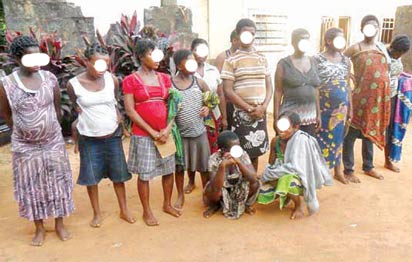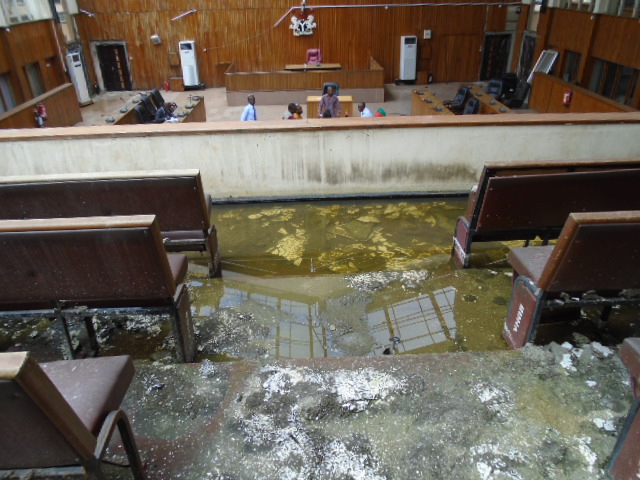Katsina worst hit; Edo, least
By Emmanuel Edukugho
About 16 million girls, aged 15 to 19, and some one million girls, under 15 years, give birth yearly in developing countries with Nigeria inclusive. Complications during child-birth and pregnancy are the second causes of death for 15-19 years old girls worldwide.
For some adolescents, pregnancy and child bearing are planned and wanted, but for many others, they are not. Some girls do not know how to avoid being pregnant as sex education is still rare and elitist in many countries, including Nigeria. Again, many girls are ignorant, poor or ashamed to seek contraception services. Nigerian girls easily give to sex overtures from men, unable to refuse unwanted sex or resist coerced sex which is often unprotected.
There are million s of unsafe abortions among teenage girls which parents don’t know about or some could be collaborators in attempts to protect the future of the girls.
Research has shown that in developing countries, babies born to mothers under 20 years of age face 50% higher risk of being “still births” or dying in the first few weeks as against those born to mothers aged between 20 and 29. Babies born to teenage girls are more likely to have low weight with risk of long-term health challenges.
Many girls who become pregnant have the tendency to drop out of the education system, with little or fewer skills and opportunities for gainful employment. Therefore, they may suffer social stigma.
Medical experts define teenage pregnancy as female conceived under the age of 20. A pregnancy can occur after the start of puberty before the first menstrual period, but usually after the onset of periods. In well-nourished girls, menstruation usually takes place around the age of 12 or 13.
In several parts of Africa, including Nigeria, risks of medical complications are greater for girls aged under 15, because an undeveloped pelvis can lead to difficulties in child birth. For many countries, developed and developing, obstructed labour during child bearing is normally tackled by caesarian section. But where this was unavailable, it can lead to obstetric fistula, infant mortality or even maternal death.
Indications are emerging about peer pressure of factors encouraging both girls and boys to engage in unprotected sex. This has resulted in the increase of sexual activities among teenagers and consequently higher teenage pregnancies and sexually transmitted diseases (STD), use of drugs and alcohol, including marijuana, etc which encourage unintended sexual activities that may end up in teenage pregnancy.
Rape
Studies from South Africa have found that 11-20% of pregnancies in teenage girls are directly linked to rape, while about 60% of teenage mothers had unwanted sexual experiences preceding their pregnancy. A US research institute has also found that 60% of girls who had sex before age 15 were coerced by males who, on average, are six years their senior. One in five teenage fathers admitted to forcing girls to have sex with them. Up to 70% of women who gave birth in their teens were molested as young girls. Adolescent girls are often in abusive relationships at the time of their pregnancy.
Another aspect is the media influence as teenagers expose to sexuality in the media were also more likely to engage in sexual activity themselves. According to Time magazine, “teens exposed to the most sexual content on TV are twice as likely as teens watching less of this material to become pregnant before they reach the age of 20.”
It has been gathered that Nigerian authorities has failed to adequately promote sexual health information for young people. The use of modern contraceptive methods among sexually active adolescent women is very little. Nearly one-third of sexually active women aged 15-24 had an unmet need for modern contraception information and services. The provision of appropriate contraceptive methods has been grossly inadequate for teens.
According to our investigation, teenage pregnancy in the Niger Delta is concentrated among girls with less formal education, unemployed, without adequate ante-natal care and obstetric risk for poor pregnancy outcome.
Felicia Aremu is 17 years old, an apprentice in an hair dressing shop after a botched secondary school education which ended abruptly in JS3. She lived with her parents and two younger brothers in a single room apartment at Onike, Yaba. Poverty is a growing problem in Nigeria.
There is a high rate of educational drop-out for children from low income homes as her father is a daily paid casual worker in a b lock making outfit in the neighbourhood. Her mother sells vegetable leaves in the local evening market.
Children from such homes are often at higher risk of educational failure than their counterparts from average income homes. Juvenile delinquency and teenage pregnancies occur among this group. In most cases, they often lack positive role models, only to become mothers in their teens.
Felicia was impregnated by a jobless polytechnic graduate. There are thousands of teenage girls between the ages of 16 and 19 years with unwanted pregnancies and babies without responsible fathers to care for them. The poor and illiterate are most likely to engage in risky sexual behaviours and other anti-social activities that could lead to teenage pregnancies, unsafe abortions, multiple sexual partners, smoking, alcoholism, etc.
Child bearing
In Nigeria, according to investigation, affirmed by the National Population Commission, NPC, teenage pregnancy varies markedly in the northern and southern zones, as well as urban and rural areas. They are higher in northern rural areas. One in every three teenage girls in the North has started child bearing compared to one in every ten in the South.
During last year’s World Population Day, it was disclosed that Katsina State has the highest rate of teenage pregnancy and motherhood in Nigeria, accounting for 65% of teenage pregnancy, while Edo State had the least of 2.9%.
The NPC reportedly noted that pregnancy was the highest killer of teenage girls globally. And that for girls and women, aged 15-19 years, pregnancy and child birth were the number one killer, causing the death of 50,000 of them every year.
NPC reiterated that teenage pregnancy not only imposes severe health and psychological strains on the baby and teen mothers but also has a long term negative impacts on sustainable development efforts adding that “it worsens the population and reproductive health situation and compromises genuine efforts to promote gender equity, educational attainment, family values and economic development.”
Poverty was also blamed for rising incidence of teenage pregnancy as it remained the most prevalent among girls from poor homes.
Meanwhile, poverty has been identified as a major barrier to human development, and a powerful brake on accelerated progress toward the millennium goals.
The World Bank described poverty “as pronounced deprivation in well being”. Research showed that poverty is inextricably linked with food insufficiency, food insecurity or inability to get nutritionally adequate foods in socially acceptable ways.
In the Nigerian food consumption and nutrition survey carried out recently, 42% of children were stunted while 25% were underweight. In a report by the United Nations Children Fund (UNICEF) 80% of chronically undernourished children were found in 24 countries including Nigeria. Under nutrition undermines the survival growth and development of children and women and it diminishes the strength and capacity of the nation.
There are over 100 million street children worldwide. The poor live in environments with inadequate living conditions with factors that can compromise health status like poor shelter, lack of good sanitation and clean water with limited health care. The World Health Organization (WHO) and UNICEF stated that 88% of deaths are attributed to unsafe water, inadequate sanitation and poor hygiene. Diarrhea kills about 1.5 million children in developing world and 200,000 Nigerian children yearly.
The poor are often exposed to hazardous working conditions like neighbourhood violence, pollution, and stressful jobs without fringe benefit.(Vanguard)







